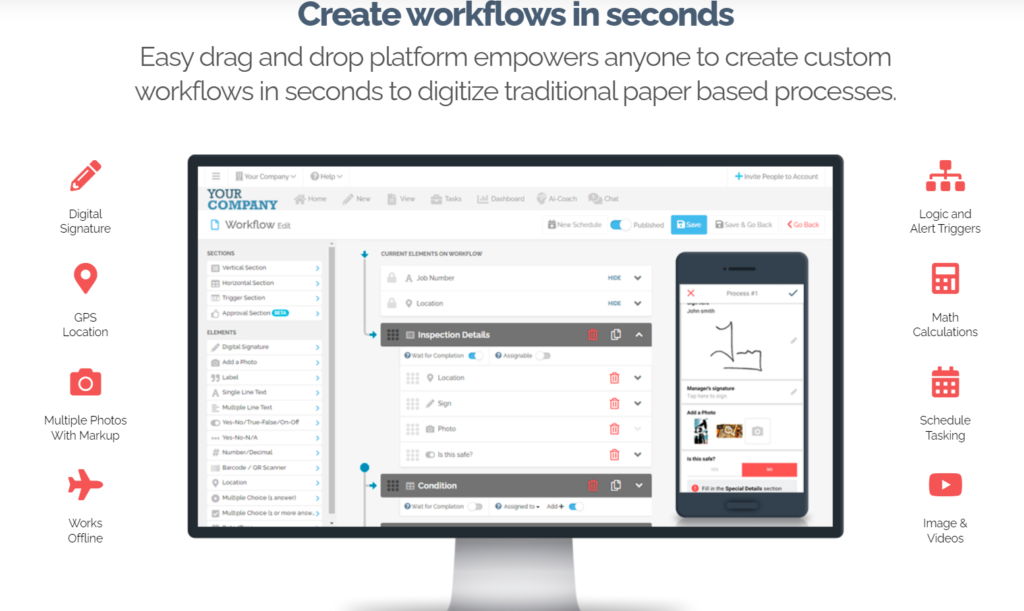Asset management in the oil and gas pipeline industry is a critical function that ensures the efficient and safe operation of pipeline infrastructure. This article delves into the intricacies of asset management, its importance, and how digital solutions like FAT FINGER can revolutionize the process. If you’re looking to streamline your asset management, request a demo today.
Understanding Asset Management
Asset management involves the systematic process of developing, operating, maintaining, upgrading, and disposing of assets cost-effectively. In the context of oil and gas pipelines, it encompasses a wide range of activities aimed at ensuring the integrity, reliability, and efficiency of pipeline systems.
The Importance of Asset Management
Effective asset management is crucial for several reasons:
- Safety: Proper management minimizes the risk of pipeline failures, which can lead to catastrophic accidents.
- Cost Efficiency: It helps in optimizing maintenance schedules, reducing downtime, and extending the lifespan of assets.
- Regulatory Compliance: Ensures adherence to industry standards and regulations, avoiding hefty fines and legal issues.
- Environmental Protection: Prevents leaks and spills, safeguarding the environment.
Key Components of Asset Management in Pipelines

Asset management in the oil and gas pipeline industry involves several key components:
1. Asset Inventory
Maintaining a comprehensive inventory of all pipeline assets is the first step. This includes:
- Pipelines
- Valves
- Pumps
- Compressors
- Monitoring equipment
2. Condition Monitoring
Regular monitoring of the condition of pipeline assets is essential. Techniques include:
- Ultrasonic testing
- Magnetic flux leakage
- Pressure testing
- Corrosion monitoring
3. Risk Assessment
Identifying and assessing risks associated with pipeline assets helps in prioritizing maintenance and mitigation efforts. This involves:
- Failure mode analysis
- Consequence analysis
- Probability assessment
4. Maintenance Management
Developing and implementing maintenance strategies is crucial for asset longevity. This includes:
- Preventive maintenance
- Predictive maintenance
- Corrective maintenance
5. Data Management
Efficient data management systems are vital for storing, analyzing, and retrieving asset-related data. This involves:
- Database management
- Data analytics
- Reporting tools
Challenges in Asset Management

Despite its importance, asset management in the oil and gas pipeline industry faces several challenges:
1. Aging Infrastructure
Many pipelines are decades old, making them prone to failures and requiring extensive maintenance.
2. Regulatory Compliance
Keeping up with ever-evolving regulations can be daunting and resource-intensive.
3. Data Overload
The sheer volume of data generated by monitoring systems can be overwhelming, making it difficult to extract actionable insights.
4. Resource Constraints
Limited budgets and manpower can hinder effective asset management.
How FAT FINGER Can Help

FAT FINGER offers a digital workflow solution that addresses these challenges head-on. Here’s how:
1. Streamlined Data Management
FAT FINGER’s platform centralizes all asset-related data, making it easily accessible and manageable. This reduces data overload and ensures that critical information is always at your fingertips.
2. Enhanced Condition Monitoring
With FAT FINGER, you can automate condition monitoring processes, ensuring timely detection of potential issues. The platform supports various monitoring techniques, providing a comprehensive view of asset health.

3. Efficient Maintenance Management
FAT FINGER enables the creation of customized maintenance schedules based on real-time data and risk assessments. This ensures that maintenance efforts are both timely and cost-effective.
4. Regulatory Compliance
The platform helps you stay compliant with industry regulations by providing tools for documentation, reporting, and audit trails. This minimizes the risk of non-compliance and associated penalties.
5. Resource Optimization
FAT FINGER’s digital workflows streamline operations, reducing the need for manual interventions and freeing up resources for other critical tasks.
Conclusion
Asset management in the oil and gas pipeline industry is a complex but essential function. Effective asset management ensures safety, cost efficiency, regulatory compliance, and environmental protection. However, it also comes with its own set of challenges, including aging infrastructure, regulatory compliance, data overload, and resource constraints.
FAT FINGER offers a comprehensive digital workflow solution that addresses these challenges, streamlining data management, enhancing condition monitoring, optimizing maintenance management, ensuring regulatory compliance, and freeing up resources. By implementing FAT FINGER, companies can significantly improve their asset management processes, resulting in cost savings, increased efficiency, and extended asset lifespan.
If you’re ready to revolutionize your asset management processes, create a mobile asset inspection workflow for free on FAT FINGER or request a demo.

